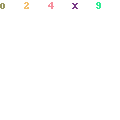 Mark is now about 200km north of Calcutta and about to enter the part of the Ganges delta which lies within India. Contrary to what many people believe, Calcutta does not lie at the mouth of the Ganges but rather on a 'distributary' of the river called the Hooghly. The main channel of the Ganges heads east into Bangladesh to be joined by the Brahmaputra before heading out across the delta lands (called Sundarbans) into the Bay of Bengal.
Mark is now about 200km north of Calcutta and about to enter the part of the Ganges delta which lies within India. Contrary to what many people believe, Calcutta does not lie at the mouth of the Ganges but rather on a 'distributary' of the river called the Hooghly. The main channel of the Ganges heads east into Bangladesh to be joined by the Brahmaputra before heading out across the delta lands (called Sundarbans) into the Bay of Bengal.  This image of the delta, which comes courtesy of NASA, gives a particularly good impression of the way the river disgorges huge quantities of sediment into the waters of the Bay of Bengal.
This image of the delta, which comes courtesy of NASA, gives a particularly good impression of the way the river disgorges huge quantities of sediment into the waters of the Bay of Bengal. 

The sluice gates which are clearly visible above opened for the first time back in 1974 and now divert a large part of the discharge of the Ganges into the Hooghly river and out through the port of Calcutta. The reason for building this barrage was to flush out the silt from the river bed in Calcutta and improve the navigability of the port. However, the project is a classic example of how interference with a river regime has knock-on effects elsewhere - in this case in Bangladesh where the withdrawal of the Ganges water has had serious implications. There is an article here which explains what has happened in Bangladesh.
The view below shows is a photo of the Farakka barrage taken from a train crossing the Ganges bridge . As the bridge carries both road and rail it will be an identical view to the one Mark would have had earlier....


No comments:
Post a Comment